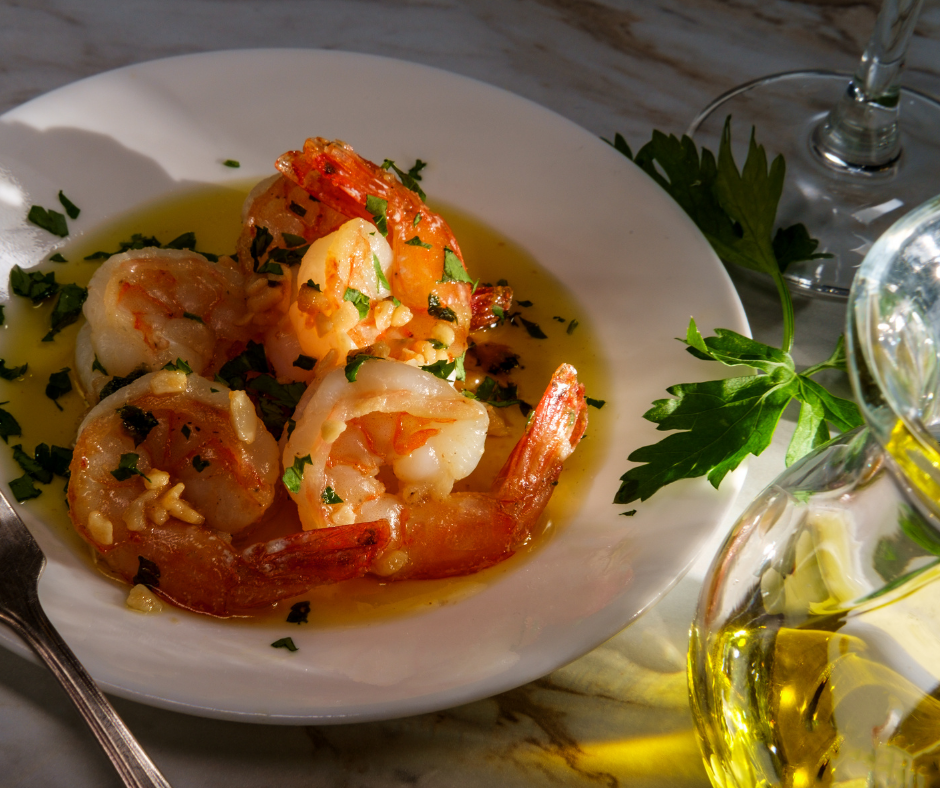
-
Canada is recognized as a global leader in sustainable fisheries management.
-
Over 60% of Canada’s wild-caught seafood is certified sustainable.
-
The seafood industry supports more than 90,000 jobs and generates over $9 billion annually.
-
Indigenous communities have long been stewards of Canada’s waters, with traditional practices that shaped sustainable fishing today.
















For centuries, the Detroit River has been a place where people gathered to fish, trade, and travel. Standing on the Windsor riverfront, you’re looking north across the water into Detroit. In the past, the river carried voyageurs in canoes and rumrunners during Prohibition. Today, it’s a symbol of friendship and shared identity, where families still cast lines from the banks, hoping to catch walleye, perch, or bass. Fishing here connects to generations who have relied on the river’s bounty, bridging two countries with one simple act.
A North American classic that Canada fully embraced — the California roll goes Saturday-night snack mode when it’s battered, fried, and finished with glossy teriyaki and mayo. You’ll see versions at pubs and sushi spots from Vancouver to Halifax: crunchy outside, creamy-crab-and-avocado inside, built for sharing with friends.
From Richmond night markets in BC to Spadina in Toronto, bao buns feel right at home in Canada’s mosaic — soft, cloud-light pockets you stuff at the table and pass around family-style. This version gives you a reliable bun dough plus simple toppings that nod to our East-meets-West pantry.
Dim sum favourite meets Canadian weekend tradition — shared steamer baskets, lots of chatter, and a tray of open-faced sui mai. From Vancouver’s Richmond night markets to Toronto’s Chinatown, these little bites fit right into our multicultural table.
A true Canadian creation, sushi pizza was first dreamed up in Toronto in the 1990s — a perfect blend of East-meets-West creativity that defines our multicultural food scene. Crispy rice “crust,” creamy sauces, and fresh fish make it both familiar and exotic. You’ll find versions in sushi bars across Canada, from Vancouver to Halifax — each bite a reminder of how innovation and diversity come together at the Canadian table.
Aburi sushi — lightly torched so the fish just melts — found a home in Canada on the West Coast, where Vancouver’s sushi scene helped popularize the style. It’s elegant yet unfussy: warm, smoky top; cool, seasoned rice beneath. Perfect for a dinner party starter or a hands-on night at home.
West Coast meets weeknight: cedar-planked salmon, roast potatoes still warm from the oven, and a bright lemon–dill pickle dressing. Piled over crisp greens, it’s hearty enough for supper and sunny enough for a picnic—simple, fresh, and very Canadian.
Comfort-food classic with a Canadian wink, sausage and mash went from pub fare to weeknight staple here—think Yukon Gold potatoes, prairie-style grainy mustard, and good butcher’s sausages sizzling in a skillet. Piled high with creamy mash and a glossy onion gravy, it’s cabin-cozy, city-friendly, and perfect for cold nights.
Simple, coastal, and comforting, this creamy fish soup tastes at home from Norway’s harbours to Canada’s shores. Atlantic cod, Pacific haddock, or sweet East Coast shrimp settle into a gentle dill-scented broth with tender vegetables—nourishing after a windy day by the sea and proof that humble ingredients can feel memorable.
Bright, zesty, and beach-day simple, ceviche may be rooted in Mexico, but it feels at home in Canada too—especially with cold-water halibut, scallops, or spot prawns. Lime “cooks” the seafood until just opaque, then fresh tomatoes, onion, coriander, and a little heat turn it into sunshine in a bowl. It’s coastal cooking at its cleanest: crisp, vibrant, and made for sharing.
Smoked fish pâté is Canadian at heart — simple, rustic, and refined all at once. I usually make it with smoked trout, a nod to Canada’s lakes and rivers, but…
On Canada’s West Coast, salmon is more than food — it’s a way of life, a symbol of the coast itself. Flaky, tender salmon or trout served with a bright dill and caper sauce feels effortlessly elegant yet remains wonderfully simple. Piled on toasted bread or served over greens, it captures the balance of richness and freshness that defines West Coast cooking.
Some dishes prove that less is more — and garlic shrimp is one of them. Sizzling in olive oil, butter, garlic, and a touch of chili, shrimp transforms into something bold yet effortless. Served with crusty bread for dipping, it feels as at home in Canada as anywhere in the world — whether made with sweet Atlantic shrimp from the East or meaty West Coast spot prawns, it’s a dish that celebrates the richness of our coastal waters.
Tuna tataki — a Japanese classic of lightly seared tuna with a cool, raw centre — has found a home in Canada’s mosaic of flavours. On the West Coast, where sushi culture thrives and fresh seafood is part of daily life, tataki has become a favourite starter. This version takes on a Canadian twist with seasonal fruit: sweet peaches from Niagara or juicy mangoes from Toronto markets, adding brightness, balance, and a touch of local character.
Lobster salad may sound French, but in Canada it’s pure East Coast indulgence. Here, sweet Maritime lobster meets juicy mango in a pairing that feels both elegant and playful. Tossed in a basil–lemon mayo and scooped with crisp garlic toast triangles, it captures the brightness of Canadian summers — light, fresh, and made for sharing.
Crab is one of the great treasures of Canada’s coasts, prized for its sweet, delicate flavour. On the West Coast, Dungeness crab is a summer staple, often celebrated in crab boils and seaside feasts. Here it’s given an elegant twist — layered with creamy avocado, tart grapefruit, and silky crème fraîche. A drizzle of balsamic brings balance, while crisp garlic toast triangles make the perfect scoop.
This creamy chowder, inspired by the version at Earls, is hearty, rich, and deeply comforting — the kind of bowl that feels like home on a chilly Canadian day. Made with chicken stock, potatoes, smoky bacon, and cream, it’s a versatile dish that works with or without clams. Whether served on the coast or far inland, it has become a Canadian favourite for its warmth and flavour.
Lobster bisque may be French in origin, but it feels right at home in Canada, where lobster suppers are a hallmark of Maritime culture. Once humble fisherman’s food, lobster has become the centrepiece of East Coast feasts and celebrations. Silky, rich, and deeply flavourful, bisque captures that spirit — simmered from shells, enriched with cream, and perfect for turning a cold winter night into something festive.
This dish is rooted in Canadian coastal life — simple grilled fish on rustic bread with a squeeze of lemon. In Atlantic Canada, mackerel is one of the most accessible catches, often hooked right from wharves in summer and fall. Families in Newfoundland, Nova Scotia, and the Gulf of St. Lawrence would fill buckets, then head home to fry or grill the catch. Served here on toast with tomato and rocket, it’s rustic, nourishing, and a reminder of how Canadians cook with the season and the sea.
This salad brings together Canadian favourites — shrimp and bacon — with the brightness of tropical fruit. Sweet prawns, juicy mango, and salty bacon or Parma ham meet crisp greens and homemade garlic croutons, all tied together with a zesty chili-lime dressing. It’s light yet satisfying, a dish that works as well on a snowy winter day as it does on a summer patio.
Salade Niçoise is one of those timeless French classics that has travelled beautifully, finding a place on Canadian tables, especially in Québec where French culinary traditions run deep. Fresh tuna seared rare, or even a can of olive-oil-packed tuna, brings substance to a platter of potatoes, beans, tomatoes, eggs, and olives. With its balance of colour, flavour, and texture, it feels rustic and elegant at once — a dish that shows how Canadian kitchens blend heritage with what’s fresh and local, like BC albacore tuna.
This pasta is quick, light, and endlessly forgiving — exactly the kind of dish that shows up on the table when Canadian summers run hot and the last thing you want is to fuss in the kitchen. It was always a kids’ favourite in our house: bright with tomato, salty with olives and capers, and just enough tuna to make it hearty. Best of all, it tastes just as good cold the next day, ready to be packed into a picnic basket or served on the back deck in the evening sun.
Few dishes feel more Canadian than a lobster roll — sweet shellfish tucked into a soft bun with just enough dressing to let the seafood shine. In Atlantic Canada, lobster rolls are a summer staple, found at seaside shacks, fairs, and family gatherings. Prawns make this version more affordable but no less satisfying. For a Newfoundland twist, some families serve it on a warm, pan-fried touton instead of a bun — rustic, hearty, and uniquely East Coast.
Fish burgers are a West Coast classic — fresh, hearty, and full of the flavours of the sea. In Canada, tuna and salmon both play starring roles, whether seared and served rare in Victoria or grilled over cedar planks on the BC coast. These burgers balance smoky bacon, crisp lettuce, and juicy tomato with a bright pickle–caper mayo, all tucked into a soft homemade bun. It’s a dish that captures the casual, coastal spirit of Canadian summers.
Cajun spice may have its roots in Louisiana, but it feels at home in Canada, where our waters offer an incredible variety of fish. From Ontario’s pickerel and lake trout to mackerel and cod along the East Coast, Canadian cooking has always been about celebrating the full catch — not just the prized fillets. This dish is about resourcefulness and respect: turning everyday fish into something soulful with bold spice, fluffy rice, and a squeeze of lemon. It’s a flavour that bridges southern heat with northern waters.
Hollandaise is one of France’s great mother sauces, but in French Canada it took on a life of its own, brought over by settlers and adapted to local ingredients. In Québec kitchens, French refinement met Canadian staples — salmon from the St. Lawrence, potatoes from the fields, and seasonal vegetables from small farms. This dish captures that blend: roasted salmon, buttery fondant potatoes, crisp broccoli, and a silky hollandaise. Rustic yet refined, it reflects how French culinary traditions shaped Canada’s food story.
Salmon and noodles may feel like a restaurant dish, but it’s one of those meals that’s quick, nourishing, and easy to adapt at home. Tender Canadian salmon or trout, crisp bok choy, and silky noodles come together with a soy-ginger sauce that’s savoury, sharp, and comforting. It’s the kind of dish that feels just as right for a weeknight dinner as it does for sharing with friends — simple, elegant, and deeply satisfying.
Cedar-planked salmon is a classic Canadian preparation with roots in Indigenous cooking traditions, where fish was smoked over fragrant cedar wood. Today, it remains a beloved West Coast dish — the cedar imparts a gentle smokiness while keeping the salmon moist and tender. The drizzle of maple syrup adds a touch of Canadian sweetness, balancing the rich, buttery fish.
In Quebec’s kitchens and bistros, French elegance meets Canadian staples. Beurre blanc, a butter sauce born in France’s Loire Valley, crossed the Atlantic with settlers and found new life alongside local fish and potatoes. Here, Atlantic cod, hake, or sole are paired with creamy Quebec-grown potatoes and finished with a silky caper beurre blanc. It’s rustic yet refined — the kind of dish that reminds us how French technique transformed humble Canadian ingredients into something extraordinary.
Poke began in Hawaii as a fisherman’s snack: fresh cubes of raw fish, lightly seasoned and eaten straight from the catch. Today, it has become a vibrant, layered bowl of rice, seafood, and colourful toppings. In Canada, especially along the West Coast, poke found its home through sashimi-grade tuna from BC waters and the influence of Japanese food culture. What began as island simplicity is now a Canadian favourite — fresh, modern, and deeply multicultural.
This dish takes me back to Toronto, where I first tried it at Mövenpick — a simple plate that felt both elegant and comforting. Crisp golden rösti topped with silky smoked salmon, a spoonful of cream cheese, and a perfectly poached egg turns humble ingredients into something restaurant-worthy. It’s the kind of dish that works at brunch, a holiday breakfast, or even as a light supper.






























